On this week’s Rocket Roundup, China launches another military satellite, Rocket Lab and Arianespace return to flight, and a Chinese private rocket fails. Plus, this week in rocket history, we look back at the first time two crewed spacecraft from the same country were in orbit at the same time.
Podcast
Transcript
Hello, and welcome to the Daily Space. My name is Pamela Gay, and most weekdays, the CosmoQuest team is here putting science in your brain.
Today, however, is for Rocket Roundup.
Like last week, the things we thought would launch didn’t. And unlike last week, there was a whole lot of stuff that launched that we didn’t expect.
The Starliner test flight, for instance, did not go up. We’re hoping it will launch this coming week. If it doesn’t, there will likely be stories to tell.
Let’s get to it with those launches, shall we?
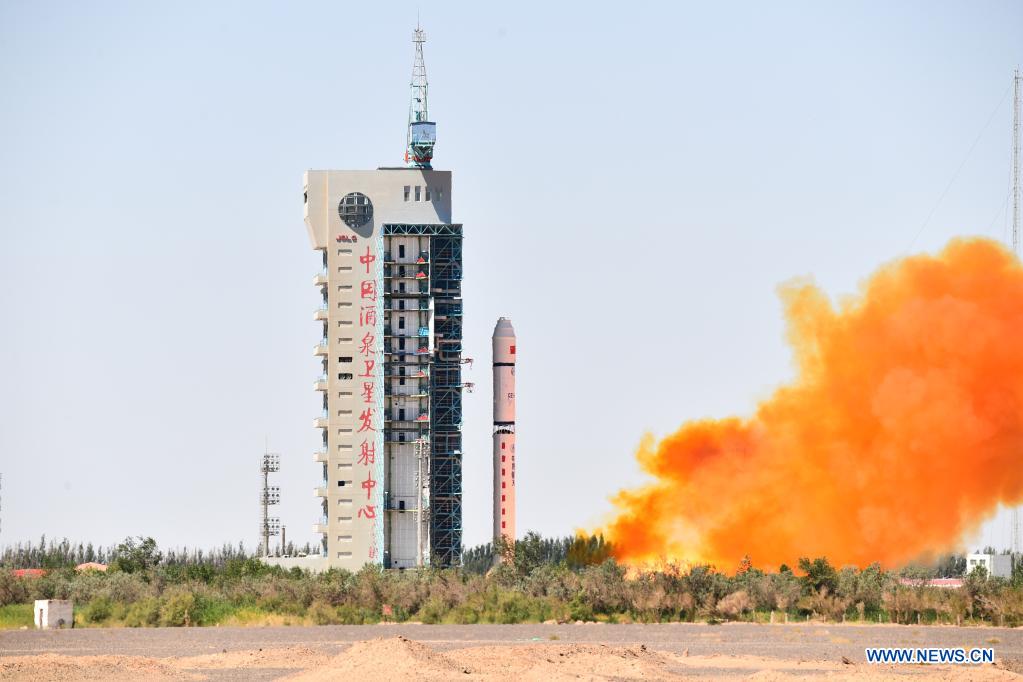
On July 29 at 04:01 UTC, a Chinese Long March 2D launched the Tianhui 1-04 satellite into a Sun-synchronous orbit from the Jiuquan Satellite Launch Center. Tianhui 1 is a military-operated constellation of stereoscopic mapping satellites capable of taking a three-dimensional image with a ground resolution of five meters. The satellite also contains a multispectral imaging infrared sensor. Both cameras take pictures with a swath width of 60 kilometers. The satellite’s mission was described as being mainly used for scientific experimental research, land use and resources monitoring and mapping, and other tasks.
Most people have stereoscopic vision, meaning that they can see in three dimensions, thanks to two eyes, and thus discern where things are located spatially. This is because their two eyes are slightly separated horizontally. Each eye sees a slightly different image, but the brain combines the two images allowing the brain to perceive three dimensions. This can be done with satellite imagery, too, either with two different satellites passing overhead a target in coordination or with one satellite with a pair of cameras. This kind of data is useful when you want to know if that nice green bike path through green fields happens to have a couple of killer hills in the middle. With normal imaging, that hill might just surprise you.
From China, we now jump to New Zealand and last week’s surprise launch that we learned about while we were recording. On July 29 at 0600 UTC, a Rocket Lab Electron launched the “It’s Getting Chile Up Here” mission, also called STP-27RM, from LC-1A at their Mahia Peninsula spaceport in New Zealand.

Onboard was the Monolith satellite from the United States Space Force. Its mission is to demonstrate the utility of a large sensor on a smaller spacecraft bus, focusing on the possible difficulties in spacecraft attitude control. Specifically, Monolith will carry a space-weather instrument package.
This was Electron’s return to flight after the failure of the previous launch in May 2021 seconds into the second stage flight. Rocket Lab recently disclosed that the failure was caused by a faulty igniter from “a previously undetectable failure mode within the ignition system that occurs under a unique set of environmental pressures and conditions”. The igniter failure caused interference with the signals coming from the launch vehicle flight computer, resulting in the engine gimbal pistons pushing the engine hard to one side and the engine automatically shutting down.
After the failure, Rocket Lab began an intense failure analysis program that was able to replicate the failure mode on the ground and implement corrective actions. Rocket Lab’s own team worked with the FAA to return to flight with a minimum of delay.
So, why does the FAA, a U.S. government agency, care about a New Zealand rocket? The answer is because Rocket Lab is legally incorporated in the USA with a wholly-owned subsidiary in New Zealand which actually does all the launching bits. Sensitive components such as the rocket engines and flight computers are manufactured in the U.S. at Rocket Lab’s facility in Huntington Beach, California, and shipped to New Zealand for integration with the rocket’s tankage which is manufactured in New Zealand.
The reason for all of these trans-Pacific shenanigans is ITAR and MCTR – International Traffic in Arms Restrictions and Missile Technology Control Regime – the U.S. laws that restrict the sale of militarily-sensitive technology and hardware so that it doesn’t end up in the hands of countries or organizations the US doesn’t like. Rocket engines and guidance systems fall under this law. In order to launch for the U.S. government (a significant market), Rocket Lab needs to be in compliance with these laws. They apply to any company owned by Americans even if they launch from outside of the U.S., which is why SpaceX will still need FAA permission for Starship launches from a converted oil rig even if it is in international waters.
Fortunately, this launch was successful, and the satellite was deployed into the planned orbit about an hour after launch. No first-stage recovery was attempted, though Rocket Lab did talk about future plans for recovery on the webcast.
This launch was originally planned to go from Rocket Lab’s new LC-2 pad in Wallops Island, Virginia. However, it was shipped halfway across the world to Rocket Lab’s main pad in New Zealand to avoid further delays in getting the satellite in orbit. Rocket Lab is still waiting for FAA and NASA approval for their Autonomous Flight Termination System for launches from the Wallops Island facility.
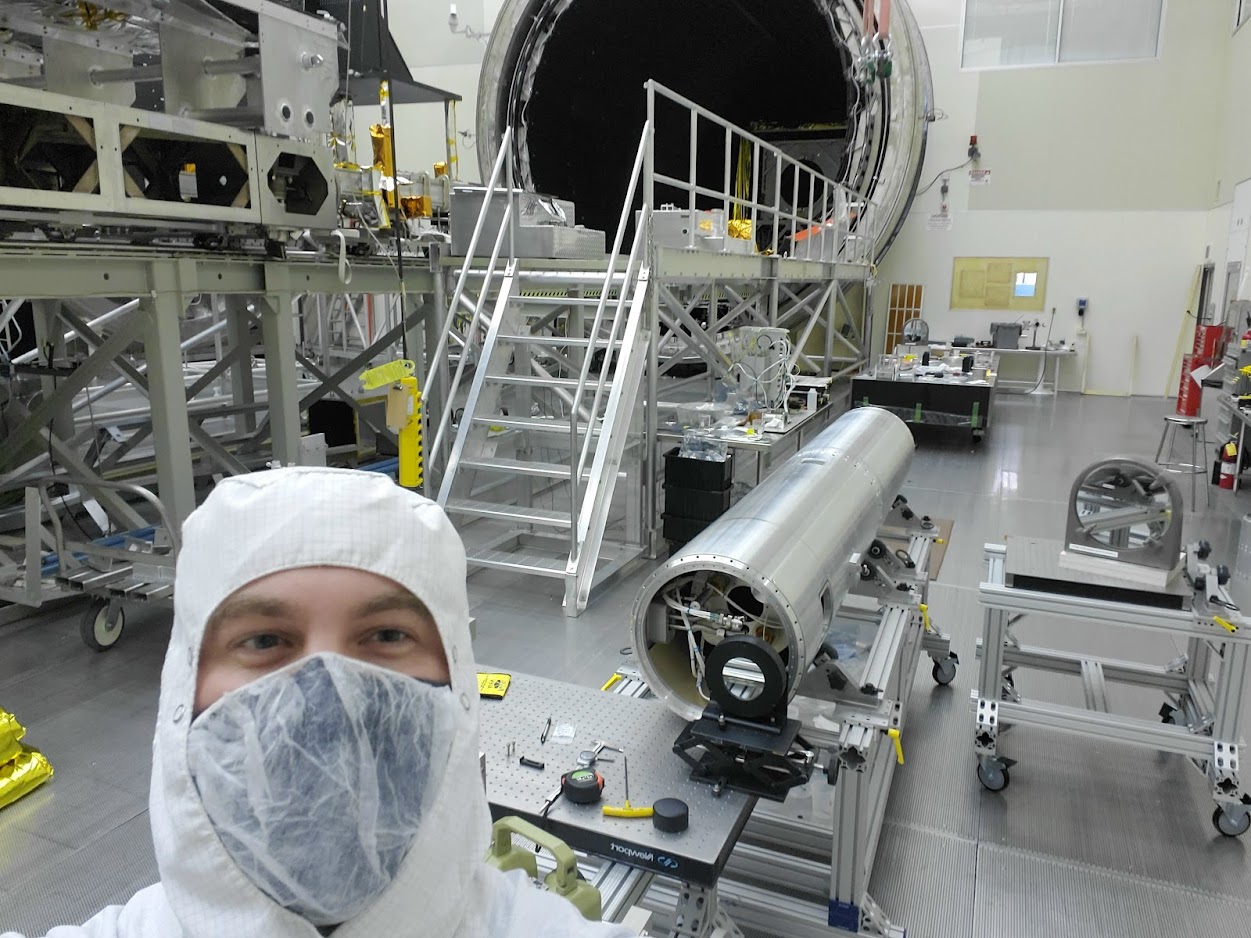
At 18:20 UTC on July 30, a Black Brant IX launched from the White Sands Missile Range in New Mexico carrying the MaGIXS payload to a 307-kilometer apogee. The goal of the MaGIXS – Marshall Grazing Incidence X-ray Spectrometer – payload is to answer some important unanswered questions in heliophysics: why and how the corona is so much hotter than the surface of the Sun. One possible explanation is small flares that cause the magnetic field of the Sun to tangle and occasionally superheat the corona. A second possibility is constant waves of energy which leave the surface and heat the corona.
MaGIXS will figure this out by observing in soft X-rays. Other missions have done this, but MaGIS is unique in that it will observe the Sun’s temperature at a much higher resolution, and thus be able to tell the difference in temperature between different parts of the Sun’s active regions in higher detail than before.
Besides heliophysics, gaining a better understanding of coronal heating will benefit society at large because of improved predictions for solar flare and coronal mass ejections, which can and have destroyed entire electrical grids and even satellites in orbit before.
After its observations, the payload was recovered via parachute on the ground.
On July 30 at 21:00 UTC, an Ariane 5 ECA rocket launched the Star One and Eutelsat Quantum satellites into a geostationary transfer orbit. The rocket took off and almost immediately disappeared into a low cloud bank, reappearing a few seconds later, but the webcast switched to animation and stayed on it for the rest of the flight.
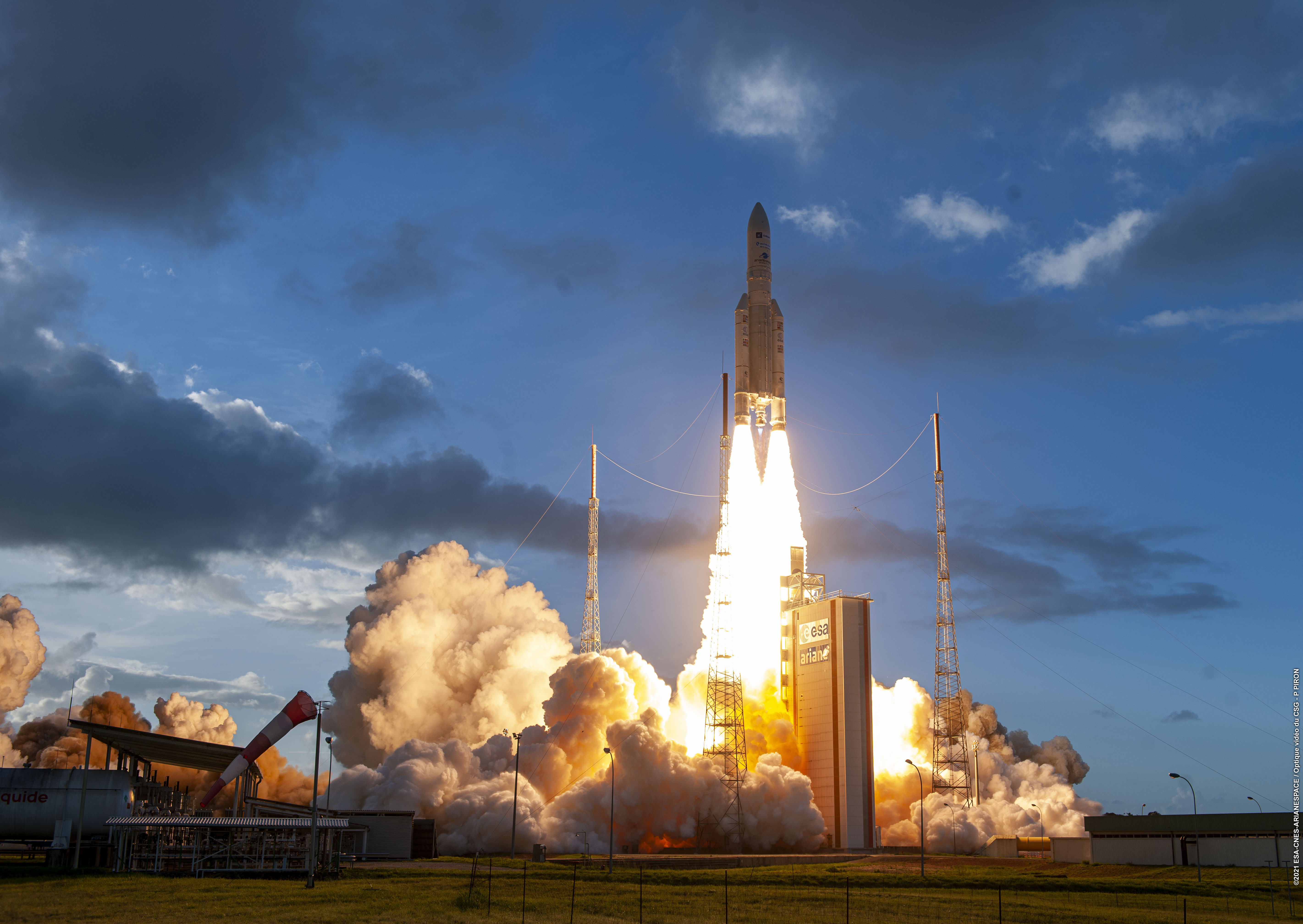
This was the Ariane 5’s first launch in almost a year after it was grounded following payload fairing issues. These issues are particularly important to solve because an upcoming Ariane 5 flight will carry the long-delayed gilded infrared space telescope which shall not be named towards its final position at L2 out past the Moon. The ULA Atlas V 500 series rockets also halted all but one launch because they use a similar fairing made by the same manufacturer.
The launch was successful, and the two payloads were deployed at the proper times. Star One is a fairly conventional communications satellite with lots of transponders in different bands and will be used to provide direct-to-home television, broadband internet, and other services in Brazil and neighboring countries in South America.
Eutelsat Quantum is pretty neat. Instead of having a lot of individual band transponders like Star One D2, it is a completely software-defined satellite — the first commercial satellite of its kind according to its manufacturer. It can be commanded to change its coverage and frequency to different areas while in orbit, allowing it to be used for many missions over its fifteen-year lifetime. The satellite is a collaboration between Eutelsat, Airbus, and the European Space Agency.
The total payload mass inserted into orbit by the Ariane 5 was a massive 10,515 kilograms between the two payloads and the necessary adapters and other hardware. That’s about 5,200 two-liter soda bottles. The mission duration from launch to second satellite separation was 36 minutes and 24 seconds.
On August 3 at 07:43 UTC, an iSpace Hyperbola 1 rocket launched from the Jiuquan Satellite Launch Center in China; however, it failed to achieve the proper orbit.
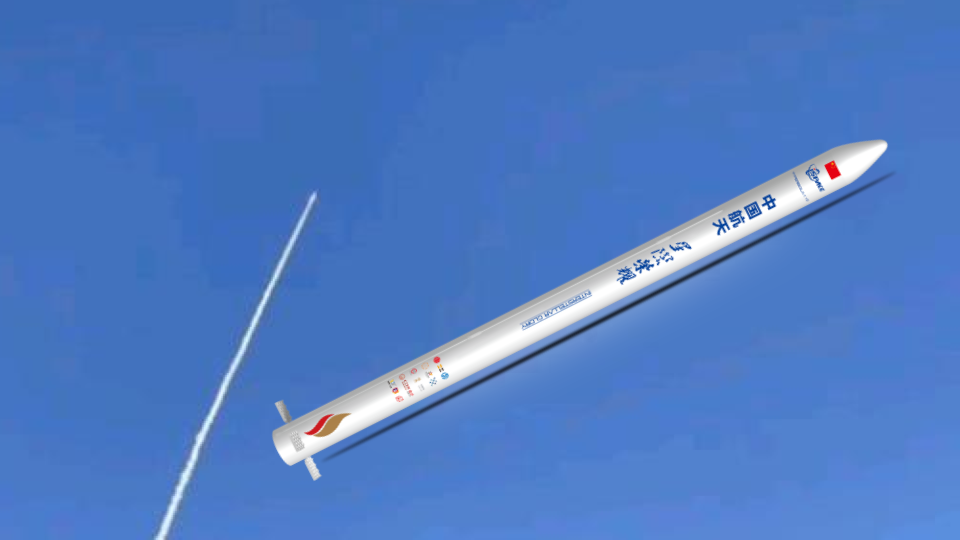
This was the third flight of a Hyperbola 1 rocket and the second consecutive failure. For whatever reason, it was called Y5 or vehicle 5. iSpace is a private-sector Chinese company but receives significant support from the Chinese government through its state aerospace company China Aerospace Science and Technology Corporation in the form of solid motors from military missiles which iSpace uses to make its orbital rockets.
Hyperbola 1 can put 300 kilograms into orbit, but iSpace has plans to make rockets with motors built by the company. Hyperbola 2 will be a much larger methane- and oxygen-fueled vehicle that will be capable of putting about two metric tons into low orbit. Much like SpaceX’s Falcon 9, Hyperbola 2 will land its first stage for reuse rather than letting it fall in the ocean. Future variants of that rocket will see additional first stages added as boosters, similar to the Falcon Heavy.
Based on comments from users on the Chinese spaceflight forum 9ifly, it appears that Hyperbola 1’s fourth stage did not achieve the proper orbit, and the payload fairing was apparently still attached, meaning the satellite could not separate from the rocket. This is consistent with reports by China’s state media, Xinhua, which stated that “the performance was abnormal, and the satellite did not enter orbit as scheduled.” The United States Space Forces’ 18th Space Control Squadron, the unit that does surveillance of objects in orbit, did not track any objects in orbit associated with the launch, so whatever orbit it managed was short-lived.
The satellite payload was likely the first Jilin-01A Mofang “Magic Cube”, the fourth generation of Jilin-type optical remote sensing satellites. It is significantly lighter than the first generation of Jilin-1 satellites, weighing just 18 kilograms compared to 420 kilograms while managing to provide a ground resolution of one meter.
No launch video was provided; the best we could find was a very low-quality photo of the rocket’s plume after liftoff.
This Week in Rocket History

This week in rocket history, we look back at the first time two crewed spacecraft were in orbit at the same time: Vostok 3 and 4.
The goal of the missions was to further expand the capabilities of the Soviet space program which had recently sent the first man to space and set in-space duration records. Their uncrewed spacecraft were setting records, too, including lunar flybys and the first attempt to send something to both Venus and Mars.
The next challenge was controlling two spacecraft in orbit at the same time.
In 1962, Vostok 3 and 4 were launched one day apart. Vostok 3, carrying Andryan Nikolayev, launched on a Vostok K rocket on August 12 at 08:02 UTC. His spacecraft was codenamed Sokol, which means Falcon in Russian. His mission was pretty simple: attempt to function in weightless conditions and test the spacecraft systems. This was humanity’s fifth orbital spaceflight after all. He also took color films of the Earth below and the inside of his spacecraft. A secondary goal was to communicate with the Vostok 4 spacecraft which would be launched a day after his own. He was intended to spend three days in space.
Vostok 4, with Pavel Popovich, did indeed launch the next day, on August 13, 1962, at 08:02 UTC. The spacecraft was named Berkut, which means golden eagle.
Nikolayev and Popovich were able to make direct radio contact when they came within five kilometers of each other immediately after Popovich’s launch. Because this wasn’t a proper rendezvous, merely a well-timed launch, the two spacecraft drifted out of communication range rather quickly. Nikolayev reported sighting the Vostok 4 spacecraft during the close approach.

One of the things that intrigued our writing team about this group flight was the careful discussion between different groups in mission control on what to do with Vostok 4. Popovich was having problems with his spacecraft’s life support system about a day after entering orbit. The cabin temperature had dropped from a borderline comfortable 27˚C at liftoff to a chilly 13˚C after the 29th orbit on the next day, August 13. On August 14, the temperature further dropped to 11˚C, and the humidity dropped to 35%. Ground control discussed whether to bring him back early or even extend it another day.
There were many factors to weigh in the decision, including detailed medical examinations planned for after the flight, concerns about his condition after four days in space, and pre-planned events at the Kremlin with Premier Khruschev and the pilot of Vostok 3, Nikolayev. Ground Control first asked Popovich if he was okay with extending the mission by a day despite the life support system issues, to which he enthusiastically replied yes. They eventually decided to bring back both Popovich and Nikolayev on the same day, in part because Popovich had used life support consumables at a higher rate than Nikolayev had because Vostok 4 was originally only expected to spend three days in orbit, and Nikolayev was expecting a longer mission and so conserved his.
But the factor that was probably given the most weight in the decision to return early was caused by Popovich in Vostok 4 having inadvertently used a code phrase that indicated he wanted to be returned to Earth immediately because of a medical problem, specifically “space sickness”.

The phrase was “I see thunderstorms.” The Russian word for thunderstorms is groza. In fact, he had actually seen real thunderstorms, but Ground Control interpreted that as the code phrase even after he clarified his use of the phrase. Later reports suggest that it was believed he had experienced a bout of nausea, panicked, sent the coded message, and then subsequently covered it up when asked about it by higher-ups in the cosmonaut program because he was embarrassed.
One final factor was a 40-minute deadline from the apparent emergency call to set up reentry so that the two capsules would land near each other at the nominal landing site in Kazakhstan. If they had extended the flight, he would have landed at a reserve landing site that was mountainous. This would have made recovery difficult and compounded his condition after four days in space.
However, the die had been cast, so to speak, and both Vostok 3 and 4 were returned to Earth earlier than originally planned, landing within minutes of each other on August 15, 1962, after almost four and three days in space, respectively. The flight cleared the way for additional group flights (Vostok 5 and 6) and even later Soyuz group flights like Soyuz 2 and 3, Soyuz 4 and 5, and Soyuz 6, 7, and 8.
In a post-flight debriefing, Popovich cleared up the confusion and his superiors realized he would have been good to go for the full four-day mission. The “thunderstorms” call was truly a misinterpretation.
Statistics
To wrap things up, here’s a running tally of a few spaceflight statistics for the current year:
Toilets currently in space: 8: 4 installed on ISS, 1 on the Crew Dragon, 1 on the Soyuz, 1 on the Shenzhou, and 1 on Tianhe.
Total 2021 orbital launch attempts: 73, including 4 failures
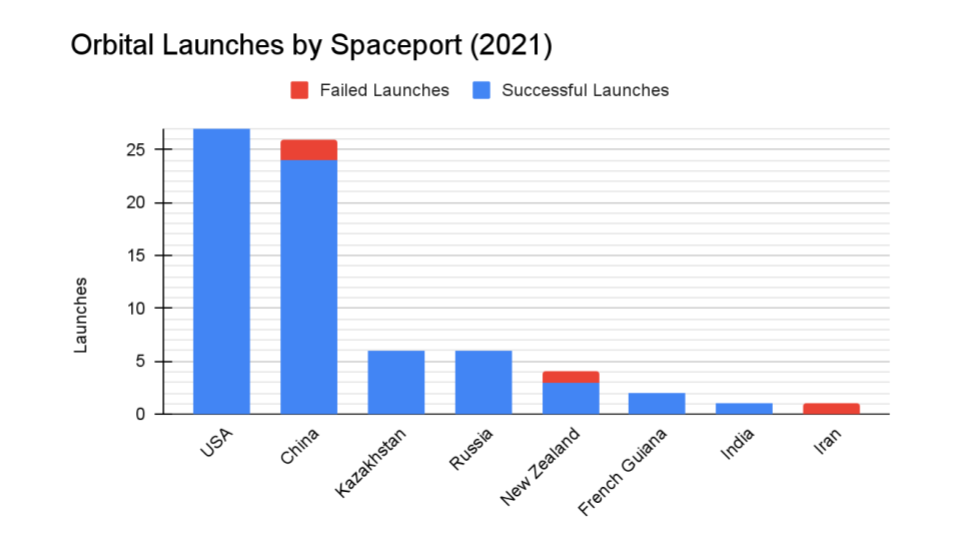
Total satellites from launches: 1309
I keep track of orbital launches by where they launched from, also known as spaceport. Here’s that breakdown:
USA: 27
China: 26
Kazakhstan: 6
Russia: 6
New Zealand: 4
French Guinea: 2
India: 1
Iran: 1
Random Space Fact
Your random space fact is that a Soviet space dog named Bobik ran away before his flight in 1951. A random stray was collected from the barracks and named ZIB, a Russian acronym meaning “substitute for missing Bobik”. ZIB launched into space on an R1 rocket on September 15, 1951, and was successfully recovered.
Learn More
China Launches a Military Mapping Satellite
Rocket Lab Returns to Flight with Space Force Mission
- Rocket Lab Completes Anomaly Review, Next Mission on the Pad in July (Rocket Lab)
- Monolith info page (Gunter’s Space Page)
- Launch video
Sounding Rocket Investigates the Solar Corona
Arianespace Resumes Normal Missions Ahead of JWST Launch
- PDF: July 2021 Launch Kit VA254 (Arianespace)
- Future Satellites (Eutelsat)
- Star One D2 info page (Gunter’s Space Page)
- Eutelsat Quantum info page (Gunter’s Space Page)
- Launch video
Chinese Commercial Rocket has Second Consecutive Failure
- Flight test of China’s commercial carrier rocket fails (Xinhua)
- Hyperbola-1 (iSpace)
- Launch failed • Hyperbola-1 Y5 • JL-1-Cube-01A (SpaceFlightFans)
- StarCraft Glory – Hyperbola info page (Global Security)
- Shian Quxian-1 info page (Gunter’s Space Page)
This Week in Rocket History: First-Ever Dual Crewed Mission
Credits
Host: Pamela Gay
Writers: Gordon Dewis, Pamela Gay, Erik Madaus, Ally Pelphrey, and Annie Wilson
Audio and Video Editing: Ally Pelphrey
Content Editing: Beth Johnson
Executive Producer: Pamela Gay
Intro and Outro music by Kevin MacLeod, https://incompetech.com/music/


 We record most shows live, on Twitch. Follow us today to get alerts when we go live.
We record most shows live, on Twitch. Follow us today to get alerts when we go live.